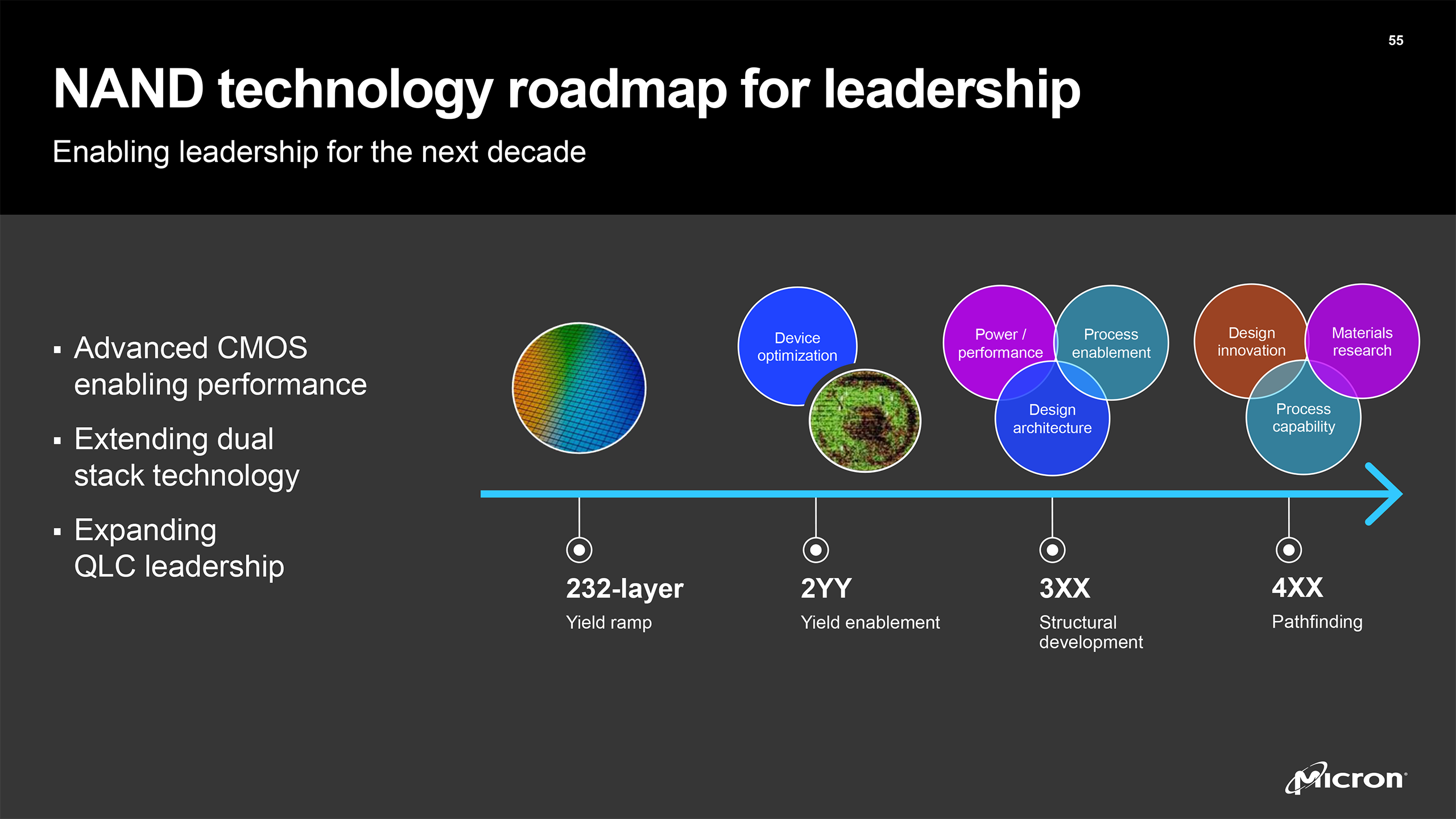Micron Announces 232-Layer 3D NAND Flash
Micron gives a glimpse of its future 3D NAND ICs.
Micron on Thursday announced the industry's first 3D NAND memory device featuring 232 layers. The company plans to use its new 232-layer 3D NAND products for a variety of products, including solid-state drives and plans to start ramping up production of such chips sometimes in late 2022.
Micron's 232-layer 3D NAND device features a 3D TLC architecture and has a raw capacity of 1Tb (128GB). The chip is based around Micron's CMOS under array (CuA) architecture and uses NAND string stacking technique to build two arrays of 3D NAND on top of each other.
The CuA design coupled with 232-layers of NAND will greatly reduce die size of Micron's 1Tb 3D TLC NAND memory, which promises to decrease production costs and enable Micron to price devices featuring these chips more aggressively or just increase its margins.
Micron did not announce I/O speeds or the number of planes featured by its new 232L 3D TLC NAND IC, but implied that the new memory will provide higher performance compared to existing 3D NAND devices, which will be particularly useful for next-generation SSDs featuring a PCIe 5.0 interface.
Speaking of SSDs, Micron's Scott DeBoer, executive vice president of technology and products, noted that the company has worked closely with developers of in-house and third-party NAND controllers (for SSDs and other NAND-based storage devices) to enable proper support for the new type of memory (and make sure those upcoming drives end up in our best SSDs list).
"We optimized [232-layer 3D NAND] technology around what we need to make the world's fastest managed NAND and both datacenter and client SSD products," said DeBoer. "The combination of controllers, both internal and external, has been a strong element of our vertical product integration focus to ensure that we have optimized NAND and controller technology for what we need to deliver future leadership products.".
Among other advantages of its 232-layer 3D TLC NAND Micron mentioned lower power consumption compared to previous-generation nodes, which will be another benefit given Micron's historical focus on mobile applications and relationship with makers of appropriate devices.
Get Tom's Hardware's best news and in-depth reviews, straight to your inbox.
Keeping in mind that Micron will start production of 232-layer 3D TLC NAND devices in late calendar 2022, we can expect SSDs powered by the new memory to arrive sometimes in 2023.

Anton Shilov is a contributing writer at Tom’s Hardware. Over the past couple of decades, he has covered everything from CPUs and GPUs to supercomputers and from modern process technologies and latest fab tools to high-tech industry trends.
